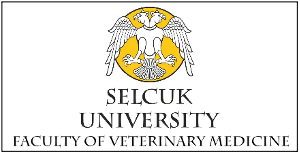| 2018, Cilt 34, Sayı 3, Sayfa(lar) 189-193 | |
| [ Özet ] [ PDF ] [ Benzer Makaleler ] [ Yazara E-Posta ] [ Editöre E-Posta ] | |
| Prevalence of helminths in horses raised in Konya Province | |
| Uğur Uslu1, Osman Güngör2 | |
| 1University of Selcuk, Faculty of Veterinary Medicine, Department of Parasitology, Konya, Turkey 2University of Veterinary Medicine, Clinical Unit of Equine Internal Medicine, Vienna, Austria |
|
| Keywords: Horse, helminth, endoparasites, prevalence | |
| Abstract | |
Aim: This study was carried out to estimate the prevalence of
helminth species in horses raised in Konya region of Turkey. Materials and Methods: One hundred adult horses of varying age, gender and breed from five randomly chosen farms were sampled. Fresh fecal samples were taken between February and March 2016 and examined by flotation, Benedek's Sedimentation and Baermann Wetzel technique and, strongylid eggs were detected, and then subsequent larval culture was performed. Results: The overall prevalences of egg excretion were 49% for Cyatostomins, 12% for Parascaris equorum and 2% for Oxyuris equi. On all five farms, at least one horse shed strongylid eggs, while P. equorum and O. equi eggs were excreted by horses from four and two farms, respectively. Harvested larvae from samples with strongylid eggs were subsequently differentiated morphologically. Larvae of Trichonema sp., Poteriostomum sp., S. vulgaris, S. edentatus and Triodontophorus sp. were found with overall prevalence of 49%, 17%, 3%, 3% and 1%, respectively. Larvae of Strongylus equinus were not found. Conclusion: On each of the five farms horses were infected with Trichonema sp. and Poteriostomum sp. S. vulgaris eggs were excreted by horses of two farms, while infections with S. edentatus or Triodontophorus sp. were only seen in horses on one farm. Neither trematode nor cestode eggs nor larvae of Dictyocaulus arnfieldi could be detected. Small strongyles and to a much lesser extent large strongyles are the main gastro-intestinal helminthic infections of horses in Konya region. |
|
| [ Başa Dön ] [ Özet ] [ PDF ] [ Benzer Makaleler ] [ Yazara E-Posta ] [ Editöre E-Posta ] | |




